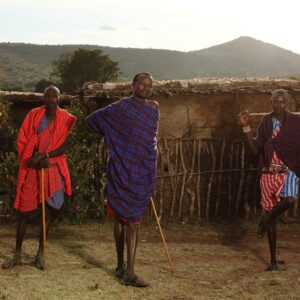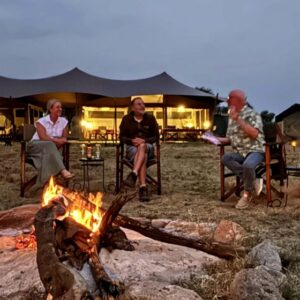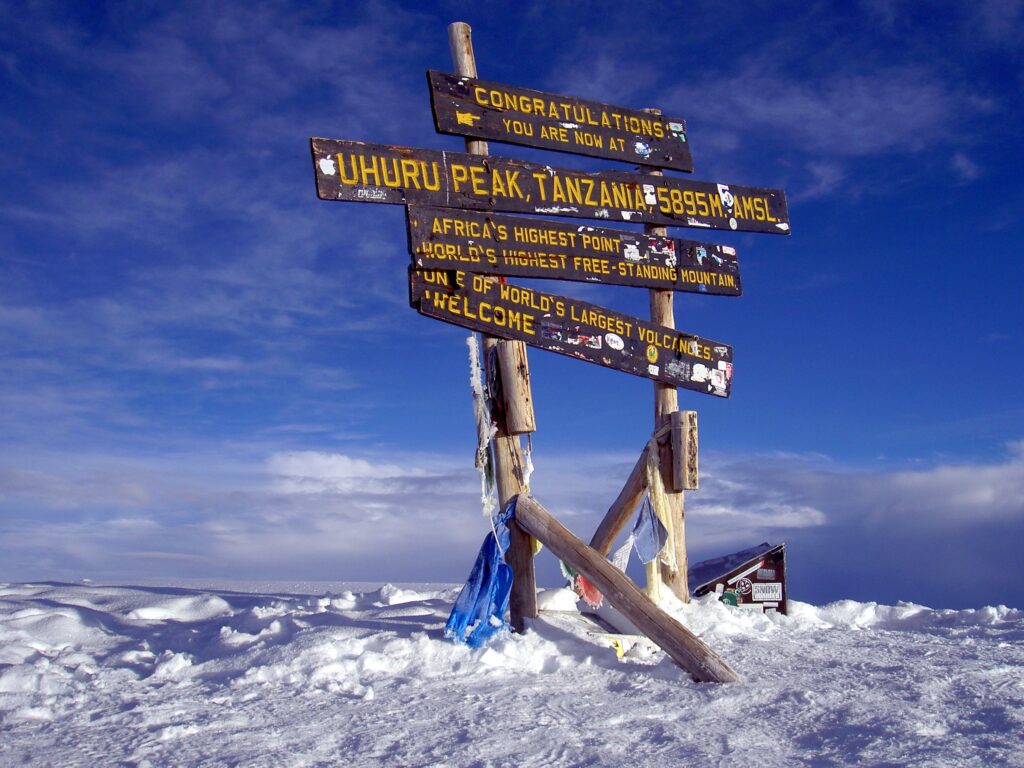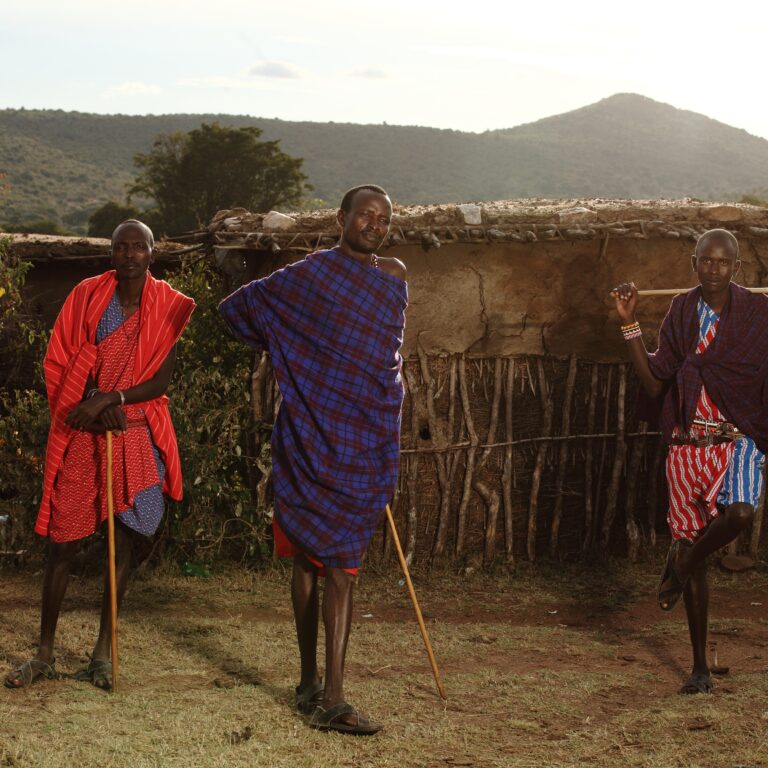A Tanzanian safari belongs on your bucket list for its iconic wildlife, particularly the Great Migration and Big Five, and the opportunity to explore iconic landscapes like the Ngorongoro Crater and Kilimanjaro. It also offers unforgettable cultural experiences with local tribes, opportunities for adventure such as hot air balloon safaris, and relaxation on the beautiful beaches of Zanzibar. Additionally, the country provides diverse and exceptional accommodation, opportunities for bird watching, and a focus on conservation and sustainable tourism.
A safari in Tanzania is more than just a vacation; it’s a transformative journey into the heart of the wild, a vibrant tapestry of culture, and an adventure that stays etched in your soul long after you’ve returned home. Situated in East Africa, Tanzania is often hailed as the definitive safari destination, the birthplace of the classic safari experience. If you are curating a bucket list of life-defining trips, here are twelve compelling reasons why a Tanzanian safari should undoubtedly secure the number one spot.
1. Witness the Great Migration: The World’s Greatest Wildlife Spectacle
A Tanzanian safari, centered on the Great Migration, should be on your bucket list because it’s one of the world’s greatest natural spectacles – a year-round event featuring thrilling predator action and new life. Topping the list of reasons is the opportunity to witness the Great Migration—an annual, circular movement of over 1.5 million wildebeest, hundreds of thousands of zebras, and various antelopes across the Serengeti-Mara ecosystem. This is arguably the East Africa tours Adventures to top your bucket list, the most spectacular wildlife event on Earth.
Imagine the ground trembling beneath the hooves of millions, a dusty, stretching line of life driven by instinct in search of fresh grazing. You can follow the progression throughout the year—from the calving season in the southern Serengeti (Ndutu) between January and March, to the dramatic, perilous river crossings of the Grumeti and Mara rivers (typically June to October). To see a calf dropped into the world one minute and running with the herd the next, or to watch the sheer will of the wildebeest as they plunge into crocodile-infested waters, is a visceral, raw, and utterly unforgettable experience that encapsulates the brutal beauty of nature.
2. Discover Iconic Wildlife: The Quintessential African Safari
A Tanzania safari belongs on your bucket list because it offers unparalleled wildlife experiences, including witnessing the Great Migration in the Serengeti and high-density wildlife in the Ngorongoro Crater. You’ll find the top 5 bucket list Places for Family Travel in Africa, where you can see the iconic “Big Five” (lion, leopard, rhino, elephant, and buffalo), explore diverse ecosystems in world-renowned national parks, and enjoy unique cultural interactions with tribes like the Maasai.
Tanzania offers the quintessential African wildlife experience, a combination of stunning natural landscapes, abundant biodiversity, and the opportunity for exclusive adventures like hot air balloon safaris, making Tanzania a truly iconic destination for any wildlife enthusiast.
Lions. The Serengeti boasts one of the highest concentrations of lions in Africa, often found lounging on the famous kopjes (rock outcrops).
Elephants. Tarangire National Park is renowned for its enormous elephant herds, frequently seen around the ancient baobab trees.
Rhinos. The Ngorongoro Crater is one of the best places in the world to reliably spot the critically endangered black rhino in a natural, protected environment.
Leopards and Cheetahs: These elusive cats are also present in good numbers, providing thrilling sightings for the patient observer.
A Tanzanian safari practically guarantees world-class sightings of these magnificent creatures in their natural, top bucket list safari experiences, in their undisturbed habitats.
3. Explore Diverse Landscapes: A Geographic Wonderland
A Tanzanian safari tops many bucket lists due to its diverse landscapes, from the Serengeti’s vast plains to the Ngorongoro Crater’s unique ecosystem. Offering unparalleled opportunities to witness the Great Migration and Big Five. Beyond the incredible wildlife, travelers can experience rich cultural interactions with local tribes. Enjoy diverse luxury and adventure options like walking safaris and hot-air balloons, and support vital conservation efforts.
Tanzania’s geographical diversity is astounding. It’s not just an endless savannah; it’s a mosaic of unique ecosystems, each offering a distinct experience.
The Ngorongoro Crater. A UNESCO World Heritage Site, this 19-kilometre-wide, unbreached caldera is a natural amphitheater and a self-contained ecosystem. It’s one of the best safari destinations in Africa for first-timers. The concentration of wildlife in a relatively small area makes for astonishing game viewing.
Mount Kilimanjaro. The majestic, snow-capped ‘Roof of Africa’ stands alone, drawing climbers and providing a stunning backdrop to the plains.
Gombe and Mahale National Parks. Located on the shores of Lake Tanganyika, these parks offer a completely different, unforgettable African safari experience—tracking chimpanzees in the lush montane forests, pioneered by Jane Goodall.
The Selous Game Reserve (Nyerere National Park). In the south, this vast area offers boat safaris along the Rufiji River, providing a unique perspective on the wildlife, particularly crocodiles, hippos, and large herds of elephants.
From the arid plains to the Great Rift Valley lakes and lush mountain rainforests, Tanzania is a geographical marvel.
4. Experience Cultural Encounters: Meet the Keepers of the Land
A Tanzanian safari should top your bucket list for unforgettable cultural encounters with its diverse tribes. Including the Maasai and Hadzabe. Offering unique insights into traditional lifestyles and customs. Beyond the iconic wildlife and landscapes, visiting communities like the Mto Wa Mbu village allows for respectful interactions. Fostering mutual understanding and providing authentic experiences that benefit local people through tourism.
This meaningful exchange, coupled with the chance to learn from their stories and daily life. Creates a deeper connection to Tanzania’s heritage and leaves lasting memories. A safari is incomplete without connecting with the people who call this land home. Tanzania is a nation of peace and cultural richness, home to over 120 different ethnic groups.
The most globally recognized are the Maasai people, known for their distinctive red shukas (cloth wraps), intricate beadwork, and semi-nomadic, pastoralist lifestyle. Many safari lodges and operators offer respectful and authentic cultural visits. You can be welcomed into a Maasai boma (village), learn about their traditions, witness their captivating jumping dances (adumu), and gain insight into their deep connection to the land and wildlife. These encounters are enriching, humbling, and provide a crucial human dimension to the wildlife experience.
5. Relax on Zanzibar Beaches: The Perfect Safari Afterglow
A Tanzanian safari, followed by relaxation on the exotic beaches of Zanzibar, should top your bucket list due to Tanzania’s unparalleled wildlife. Including the Great Migration and the “Big Five” in famous parks like the Serengeti and Ngorongoro Crater. This adventure is perfectly complemented by Zanzibar’s powdery white sand beaches and clear turquoise waters, offering a luxurious way to unwind after the thrill of the safari. The combination also provides rich cultural experiences in Stone Town, diverse cuisine, and opportunities to climb Mount Kilimanjaro. Making Tanzania a complete destination for wildlife, relaxation, culture, and adventure.
After the early mornings and dusty game drives of the bush, the white-sand beaches and turquoise waters of Zanzibar (the spice island) offer the perfect contrasting retreat. A short flight from the northern safari circuit, Zanzibar is the ideal spot for a ‘bush and beach’ itinerary.
The island offers:
Relaxation. Days spent unwinding on pristine beaches like Nungwi or Kendwa.
History. Exploring Stone Town, a UNESCO World Heritage site and a maze of narrow alleyways, bustling markets, and historical architecture reflecting its Swahili and Arab heritage.
Adventure. World-class snorkeling, diving, and sailing in the Indian Ocean, rich with marine life. This seamless combination of thrilling wildlife and serene beach relaxation makes the Tanzanian trip unparalleled.
6. Enjoy Unique Adventures: Beyond the Game Drive
A Tanzanian safari tops bucket lists for its unmatched wildlife viewing, especially the Great Migration in the Serengeti, iconic landscapes like the Ngorongoro Crater, and the chance to see the “Big Five”. Beyond wildlife, visitors can climb Mount Kilimanjaro. Relax on Zanzibar’s beaches, experience authentic cultural encounters with the Maasai people, and enjoy world-class accommodation and hospitality. While the 4×4 safari vehicle is iconic, Tanzania offers a thrilling array of other ways to experience the wilderness:
Walking Safaris. In areas like the Selous or Ruaha, guided walks with armed rangers offer an intimate perspective, focusing on the smaller. Often-overlooked aspects of the ecosystem—tracking, insects, medicinal plants, and birdlife.
Canoe and Boat Safaris. Essential in parks with rivers, these allow you to glide silently past sunbathing crocodiles, hippos, and thirsty wildlife coming to the water’s edge, offering unique photographic angles.
Night Game Drives. Permitted in some private conservancies and national parks outside the core protected areas. These drives reveal the nocturnal world. Offering opportunities to spot elusive animals like civets, bushbabies, porcupines, and hunting predators.
7. A Birdwatcher’s Paradise: A Sky Full of Colour
For nature lovers, a Tanzania safari is a non-stop marvel of avian life. With over 1,100 species of birds recorded, including endemics and migratory visitors, the country is a haven for birdwatchers. The variety is spectacular, from the massive ostriches on the plains to the vibrant lilac-breasted rollers. Crowned cranes, huge raptors like the martial eagle, and countless tiny, iridescent sunbirds. The diverse habitats—from the shores of Lake Victoria to the forests of the Arusha National Park and the wetlands of Tarangire—ensure a constant rotation of fascinating species. Even those who don’t consider themselves dedicated birders will find themselves captivated by the colours and calls of the Tanzanian avifauna.
8. Luxurious and Eco-Friendly Accommodation: Comfort Meets Conservation
A Tanzanian luxury eco-safari tops the bucket list because it offers unparalleled luxury in breathtaking natural settings like the Serengeti, while prioritizing environmental sustainability and community support through eco-friendly lodges and mobile camps. You’ll experience world-class wildlife viewing with personalized guides, enjoy unique accommodations from tree-top suites to underwater rooms, and contribute directly to conservation efforts and local livelihoods by choosing these responsible travel options. Tanzania has pioneered the concept of the luxury safari camp, blending supreme comfort with a light environmental footprint.
Luxury Tented Camps. These are not your average camping tents. They feature king-sized beds, en-suite bathrooms with hot showers, flush toilets, and often private verandas overlooking prime game-viewing areas.
Boutique Lodges. Built with local materials and designed to integrate seamlessly into the landscape, these accommodations often employ local staff and run on sustainable energy sources.
The best camps operate on a ‘low-impact, high-yield’ tourism model, ensuring your presence directly supports conservation efforts and local communities while you enjoy impeccable service, gourmet meals, and the sheer magic of sleeping under canvas with the sounds of the African night outside.
9. Opportunities for Conservation: Responsible Tourism
Choosing Tanzania for your safari is an act of supporting conservation. The country’s vast network of National Parks and Game Reserves is funded by tourism revenues. By booking a trip, you become part of the solution. Responsible safari operators prioritize sustainability and ethical practices, giving your adventure a meaningful purpose beyond personal enjoyment.
Anti-Poaching. Tourism funds directly support ranger patrols and anti-poaching units.
Community Development. Many lodges partner with local villages, supporting schools, clinics, and clean water projects.
Habitat Preservation. Your safari fee contributes to the protection of massive tracts of wilderness. Ensuring a future for the wildlife you come to see.
10. Photographic Opportunity: The Ultimate Visual Story
Tanzania is a photographer’s dream, offering an unparalleled canvas for both amateur and professional shutterbugs. The ‘golden hours’ of sunrise and sunset cast a soft, warm light across the savannah. Ideal for capturing the silhouette of a giraffe or the intensity of a predator on the hunt. The sheer scale of the landscape, the dramatic skies of the rainy season. Dust clouds raised by the migration, and the intricate details of the wildlife all offer endless subject matter. Whether you are seeking a stunning portrait of a Maasai elder or a dynamic action shot of a cheetah chase. A sweeping panorama of the Serengeti plains, Tanzania, delivers the images that tell the ultimate visual story.
11. Spectacular Hot Air Balloon Safari: A View from Above
For a truly unique perspective, few experiences rival a hot air balloon safari over the Serengeti. Rising before dawn, you float silently as the sun rises, casting golden hues over the vast plains below. From this vantage point, the scale of the Great Migration becomes clear. You might spot early-morning hunters returning to their dens. Observe enormous elephant herds navigating the woodlands, or simply appreciate the unbroken, raw wilderness stretching to the horizon. Concluding the flight with a champagne breakfast set up right on the savannah. A tradition that makes this adventure feel like a chapter lifted straight from a classic adventure novel.
12. Unforgettable Memories: A Journey That Stays With You
Ultimately, a Tanzania safari is a collection of moments that weave together into an unforgettable memory. It’s the smell of the damp earth after a sudden rain, the spine-tingling sound of a lion roaring in the distance under a sky impossibly thick with stars, the quiet moment of mutual respect shared with a wise-looking old elephant, and the warmth of the Tanzanian people. A Tanzania safari is an investment in experience, a revitalization of the spirit, and a profound reminder of the beauty and power of the natural world. It’s not just a tick on your bucket list—it’s the highlight that resets your perspective on life and adventure. Book the trip. The Serengeti is waiting.
Why an African Safari Should Make the Top of Your Bucket List?
Embark on the ultimate adventure with an African safari, where untamed African Portfolio’s Seven Wonders of Africa landscapes host breathtaking wildlife encounters, a top bucket list Adventure – things to do on your ultimate Tanzania Safari bucket list. Witness lions prowling the savannah, elephants trumpeting in the distance, and giraffes gracefully grazing against stunning backdrops. Immerse yourself in the raw beauty of nature, awakening your senses to the wonders of the animal kingdom. A safari promises unforgettable moments, igniting your spirit of exploration and leaving an indelible mark on your bucket list.
Why Mount Kilimanjaro Must Be in Your Bucket List
Tanzania Safari Packing List: Essential Items for Your Adventure
Kilimanjaro Packing List
Why should Tanzania be on your bucket list?
Why an African Safari Should Be on Your Bucket List
Reasons why the Serengeti should be on your bucket list?
The Serengeti should be on your bucket list for the chance to witness the awe-inspiring Great Migration of millions of wildebeest and zebras, enjoy unparalleled Big Five wildlife viewing and abundant other species, experience the breathtaking beauty of its diverse landscapes and vast “endless plains,” and participate in unique activities like hot air balloon safaris and cultural encounters. The park also offers excellent opportunities for photography, birdwatching, stargazing, and access to eco-friendly safari options.








